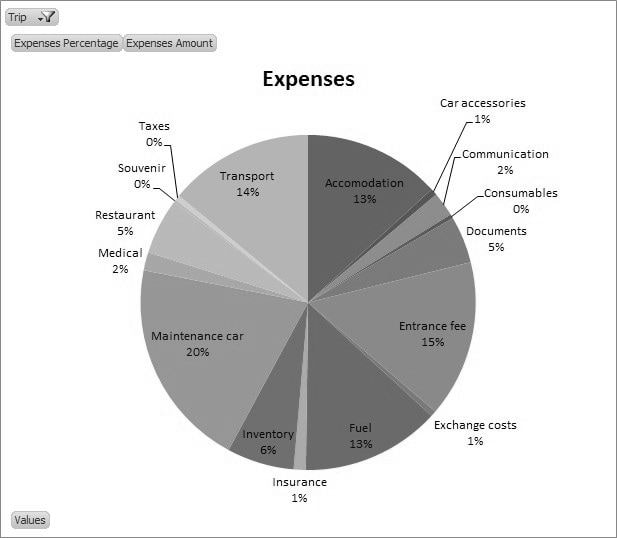Bank Cards & Cash
The theft of a purse with bank cards and a telephone as well as a separate telephone at the beginning of our second preparation trip and theft of important car papers in Chile was an important learning to review our money, bank card and paperwork strategy. Not only we had serious costs, but suddenly we could not access our bank account any more to make transfers because we could not receive text messages with approval codes anymore.
What we wanted:
The chosen approach:
What we wanted:
- Withdrawing money with adequate back-up facility;
- Cash availability if money cannot be withdrawn from an ATM;
- Minimal risk if a bank card is scanned and a PIN filmed;
- Being able to transfer money, even after loss / theft of phones.
The chosen approach:
- Two bank accounts, one for normal payments (the checking account that we now use standard) and one to withdraw money and also to pay in foreign countries (the "travel account"). The checking account is normally only used to transfer money to the travel account and the credit card account. We both have a pass for the checking account and the travel account. The travel account can not be negative and has a low balance. The travel account is the first choice to pay abroad;
- VISA credit card with cards for both of us;
- MasterCard backup (two cards);
- Authorization codes on paper. We may have to change this when written authorization codes are no longer accepted;
- Sufficient cash, mainly USD. Virgin, unfolded, and not torn banknotes that have not be written on in large and small denominations.
Expenditure Records
We have kept detailed records of all all expenses we would not have had if we had stayed at home. This means that we did not keep records of:
The overview does not include airline tickets etc. for trips to Europe, but does include shipment costs of the car. The costs of entrance fees in South America is relatively high, because we added the Galápagos cruise under this heading.
We did not include a breakdown per country in the overview, because we feel that it does not at all give a good understanding of the price level in a country. Examples:
- Food bought in shops, supermarkets, etc. Our experience is that overall food prices will be comparable to prices at home. Local vegetables etc. bought in small shops are definitely less expensive, but "western" items bought in supermarkets are often more expensive. For example Nutella, peanut butter and in some countries wine can easily be double the Dutch price;
- Clothing - we bought very little clothing, because design, size and/or quality usually does not match with what we like to buy at home;
- Replacement of items that we use at home as well due to wear and tear, i.e a tablet with a broken glass. We did include items that are specifically for the camper such as a dirt bin and items requiring replacement due to theft.
The overview does not include airline tickets etc. for trips to Europe, but does include shipment costs of the car. The costs of entrance fees in South America is relatively high, because we added the Galápagos cruise under this heading.
We did not include a breakdown per country in the overview, because we feel that it does not at all give a good understanding of the price level in a country. Examples:
- We had a major issue with our gearbox that was repaired in South Africa. This will not make South Africa more expensive.;
- We did not buy any fuel in Colombia, because the diesel price in Ecuador is half the diesel price of Colombia. This does not make Colombia less expensive;
- We skipped the prime parks in Tanzania and the gorillas in Rwanda, because we felt that the costs were not worth the money, but we did take a Galápagos cruise.
Total Costs
The total costs per day for two persons with camper were
- Middle East/Africa: € 84,50;
- South America: € 89,50.


